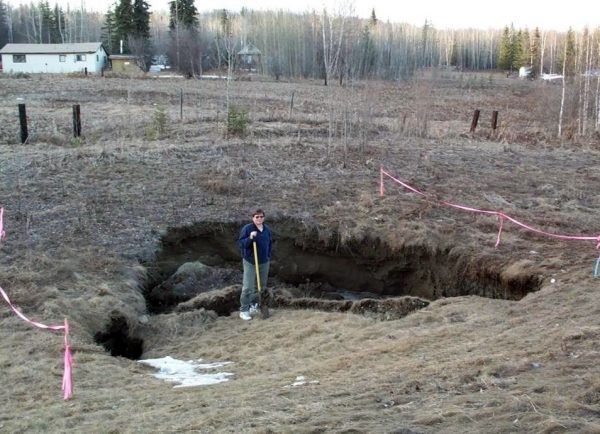Even meeting the climate change targets of the Paris Agreement will not substantially reduce those projected impacts, according to a new study published in Nature Communications.
“Much more needs to be done to prepare Alaska and Alaskans for the adverse consequences of coming changes in permafrost and climate,” said Vladimir Romanovsky, a scientist with the University of Alaska Fairbanks Geophysical Institute who has been monitoring permafrost across Alaska for 25 years.
Permafrost is ground that is frozen year-round for a minimum of two years. When it thaws, it can change from solid earth into mud. In many cases, the ground will slump, leading to destructive failure in any structures erected there.
“These observations have led me to believe that the global warming is not a ‘fake’ but the reality,” Romanovsky said. “And here, in Alaska, we are dealing already and will be dealing even more in the near future with this reality.”
Continue reading at University of Alaska Fairbanks
Image via University of Alaska Fairbanks


